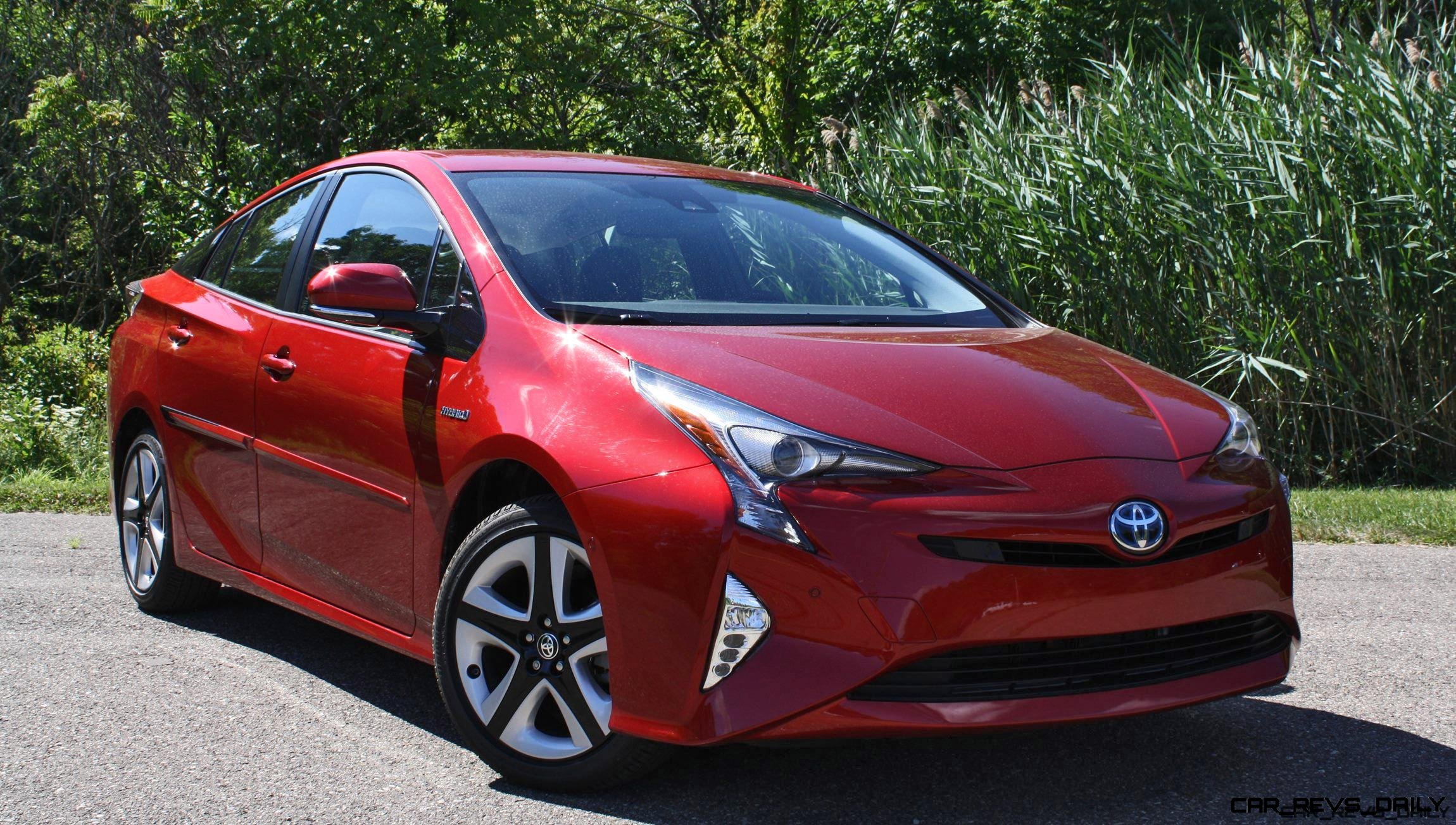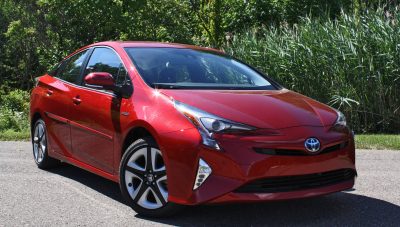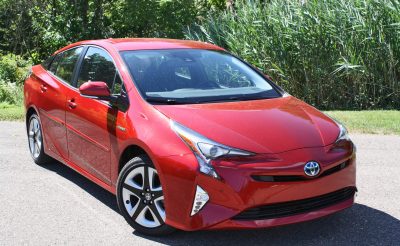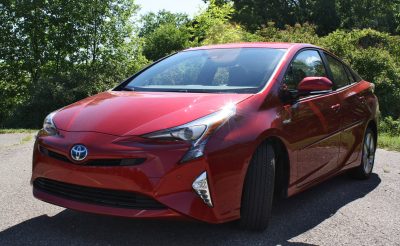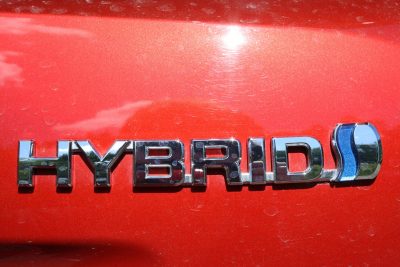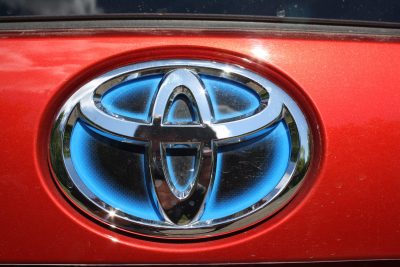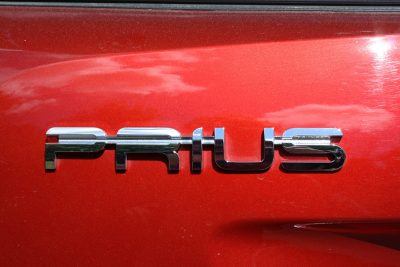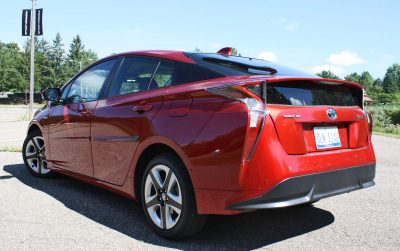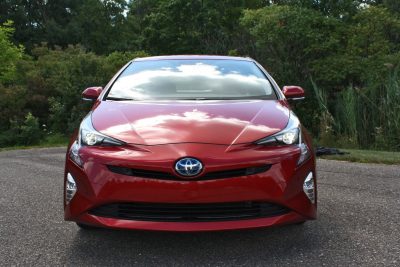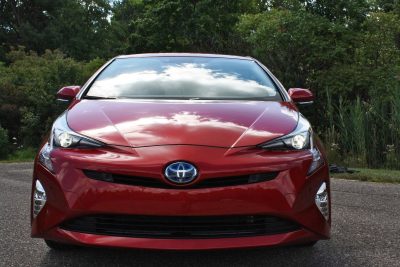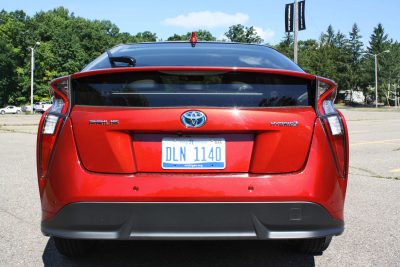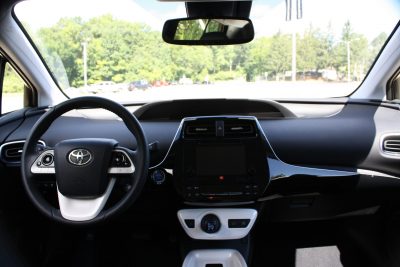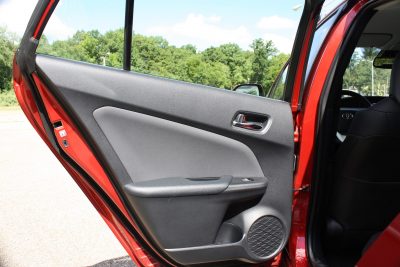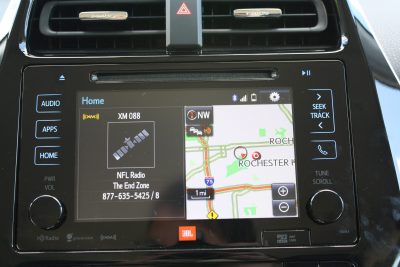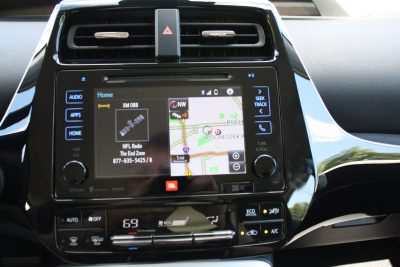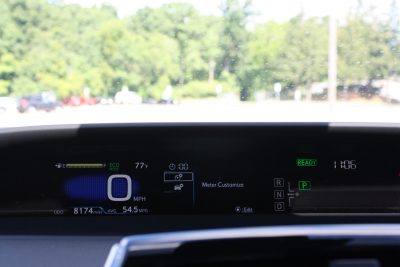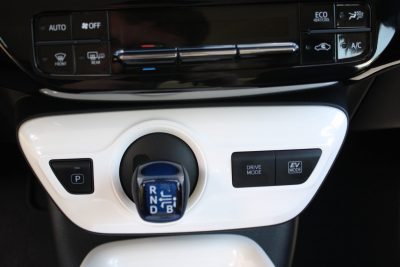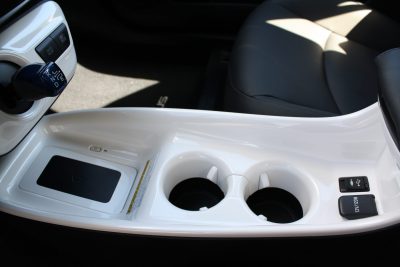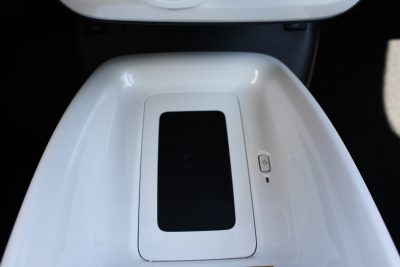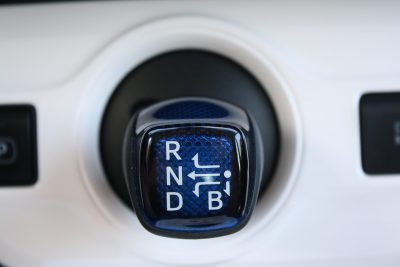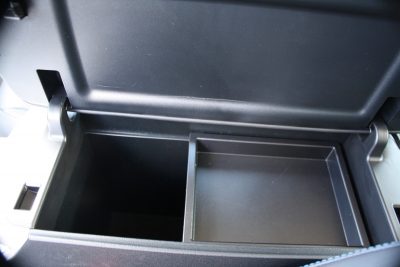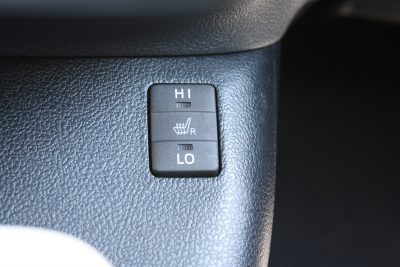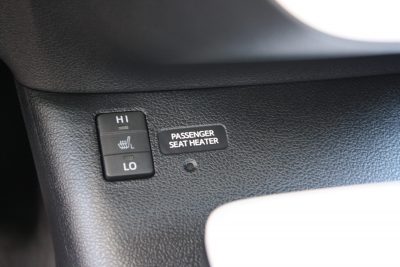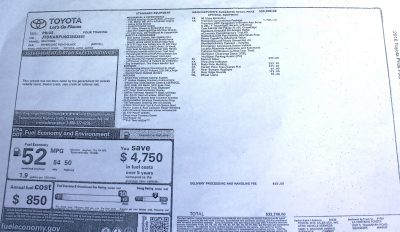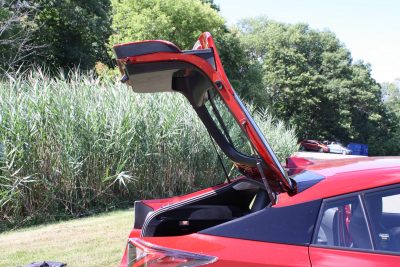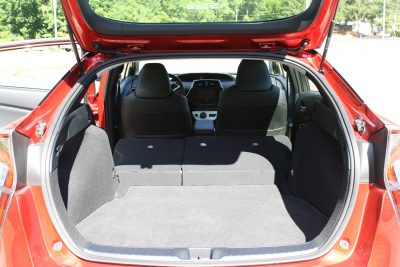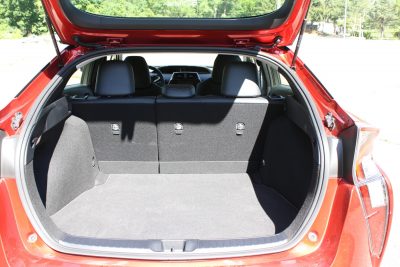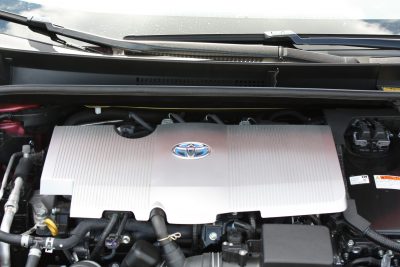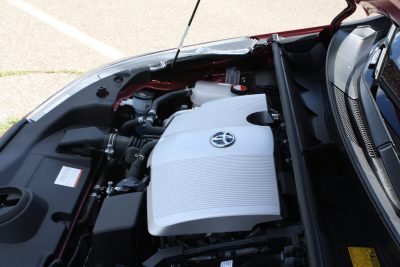When Toyota first revealed the 2016 Prius, it signaled a drastic evolution for the hybrid that helped define the green vehicle segment and also established Toyota as a prominent force in green vehicle technology. But has its latest evolution helped the Prius maintain its prominent place in the green vehicle hierarchy? Or has it lost a step or two to an ever evolving suite of green contenders?
The exterior styling of our “Hypersonic Red” tester is the latest example of Toyota’s philosophy that the Prius shouldn’t look like a conventional car. While the last generation’s lines could be best described as plain and outright dull, this latest iteration takes things in the opposite direction, and the end result is a look that is very polarizing, but also futuristic at the same time.
The angular front fascia is a very busy canvas with plenty of curves and creases that are supposed to not only improve its looks, but also help with aerodynamics at the same time.
The rear fascia doesn’t fare much better but the vertical LED light bars for the tail lamps do look awesome at night, and really make the car stand out in evening commutes. The side profile is a bit more mundane, but is still recognizable as a Prius.
The interior has also seen its fair share of updates and has gained some new tricks for the 2016 model year. Touring models like our tester benefit from faux leather seating surfaces that made the seats a comfortable place to spend time in during long commutes.
Our tester also featured Toyota’s Entune touchscreen infotainment system and while the screen still crams some functions a bit too close together, inputs were crisp with minimal lag between selections.
Visibility was also good with the lone exception being the rear window which is bisected by its trick rear spoiler. That said, the Prius also features several ergonomic quirks that proved to be frustrating at times. For instance, our tester came equipped with a wireless charging station for cell phones but during our time with the Prius, there were moments where the system lost connection with our phone, forcing me to occasionally reposition it to resume charging.
The stubby gear selector takes some practice to get used to, and controls for the front passenger seat heaters are located below the center stack which is an odd choice given how some of its rivals, as well as many non-hybrid vehicles put the controls closer to the occupant’s line of sight.
Performance for our tester comes from a revised version of the 1.8 liter 2ZR-FXE Atkinson Cycle four cylinder engine that has seen duty in the firm’s other hybrids (including the 2016 Lexus CT 200h that I recently tested.) Power is down slightly to 95 horsepower with the 71 horsepower electric motor bringing a combined figure of 121 horsepower to the festivities.
These figures translate into leisurely jaunts to 60 mph, and like its Lexus badged counterpart, the 2016 Prius does not like to be hurried through its paces. Instead, patience and a controlled right foot will reward occupants with smooth acceleration and relative quiet during city driving. Freeway driving on the other hand will make the engine loudly voice its displeasure, and there is also abundant road noise that penetrates the cabin.
While the engine will not help the Prius earn honors in stoplight drag races, it is an exercise in compactness and space management with Toyota engineers decreasing the size of the power control unit by 30 percent which allows it to sit on top of the transaxle. In addition, the downsizing of other components allowed the 12-volt main battery to move under the hood versus older Prii where it made its home in the rear cargo area.
Speaking of the rear cargo area, overall space now measures in at 27.4 cubic feet which is a slight improvement over the old Prius, and allows urbanites to have space for groceries, cargo, and even supplies for a road trip.
The suspension did a good job absorbing bumps, and while the steering is still too overboosted, there were moments where the Prius surprised me with its reflexes and minimal amounts of body roll. Braking was on par for a hybrid vehicle with minimal nose dive, smooth stops and equally minimal intrusion from the regeneration system. Like before the Prius can be driven on pure electric mode, but only for a mile, and at speeds below 15 mph.
During our time with the Prius, I tested the EV mode on the streets of our subdivision, with the car making it halfway to our office before the gas engine kicked in. As expected from an environmentally friendly offering, fuel econoour is the Prius’s calling card with the car achieving 58 mpg in the city and an equally impressive 53 mpg on the freeway. This is higher than the 42/37 mpg achieved by the Ford C-Max Hybrid and also outshines the Chevrolet Volt.
Pricing for the 2016 Toyota Prius starts at $25,030 for the base Prius Two with the ladder going up accordingly across its other four trim levels before reaching the $30,835 wielded by the range topping Prius Four Touring. Our tester had a final price tag of $33,708 which included the $835.00 shipping charge, the $1,705.00 Premium Convenience Package, an extra $395.00 charge for the special paint color, as well as other minor extras.
This pricing makes the Prius more expensive than the Ford C-Max Hybrid with the Ford also having an edge over the Prius in cargo capacity. However, this initial disadvantage is balanced out by the Prius’s higher MPG figures as well as the flexibility offered by its older brand mates the Prius c and the more utility oriented Prius v which do a good job adding flexibility to the Prii lineup.
Overall the 2016 Prius has a solid foundation for success and truly delivers on its promise of providing buyers with an unforgettable green car experience, and it will be interesting to see what the upcoming Prius Prime model will bring to this proven sales winner.

Carl Malek has been an automotive journalist for over 10 years. First starting out as a freelance photographer before making the transition to writing during college, his work has appeared on numerous automotive forums as well as websites such as Autoshopper.com.
Carl is also a big fan of British vehicles with the bulk of his devotion going to the Morgan Motor Company as well as offerings from Lotus, MG, and Caterham. When he is not writing about automobiles, Carl enjoys spending time with his family and friends in the Metro Detroit area, as well as spending time with his adorable pets.

